TIF
Type of resources
Topics
Keywords
Contact for the resource
Provided by
Years
Formats
Representation types
Update frequencies
Scale
-
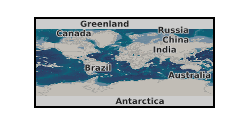
H2 adsorption data on sub-bituminous coal as a function of pressure. Hydrogen flooding of a coal core. Micro CT imaging of the effect on coal swelling after hydrogen injection. Hydrogen is trapped, and no swelling is observed indicating that coal might be a good candidate for the storage of hydrogen.
-

The response of the benthic microbial community to a controlled sub-seabed CO2 leak was assessed using quantitative PCR measurements of benthic bacterial, archaeal and cyanobacteria/chloroplast 16S rRNA genes. Similarly, the impact of CO2 release on the abundance of benthic bacterial and archaeal ammonia amoA genes and transcripts, and also to the abundance of nitrite oxidizer (nirS) and anammox hydrazine oxidoreductase (hzo) genes and transcripts. Samples were taken from four zones (epicentre (zone 1); 25m distant (zone 2), 75m distant (zone 3) and 450m distant (zone 4)) during 6 time points (7 days before CO2 exposure, after 14 and 36 days of CO2 release, and 6, 20 and 90 days after the CO2 release had ended). Changes to the active community of microphytobenthos and bacteria were also assessed before, during and after CO2 release using Denaturing Gradient Gel Electrophoresis of cyanobacteria/chloroplast 16S rRNA. Changes to the composition of the active bacterial community was assessed first using Terminal Restriction Fragment Length Polymorphism (T-RFLP) of bacterial 16S rRNA. In depth comparisons of possible changes to the active bacterial community at zone 1 and 4 before, during and immediately after the CO2 release was performed using 16S rRNA 454 pyrosequencing. This dataset was created by Plymouth Marine Laboratory (PML) under the program QICS (Quantifying and monitoring environmental impacts of geological carbon storage) which was funded by the Natural Environment Research Council (NERC), with support from the Scottish Government. The results are contained in three text files. QICS project website: www.bgs.ac.uk/qics/home.html. Tait et al. (2015) Rapid response of the active microbial community to CO2 exposure from a controlled sub-seabed CO2 leak in Ardmucknish Bay (Oban, Scotland). IJGGC DOI: 10.1016/ijggc.2014.11.021. Watanabe et al. (2015) Ammonia oxidation activity of microorganisms in surface sediment to a controlled sub-seabed release of CO2. IJGGC DOI: 10.1016/j.ijggc.2014.11.013.
-
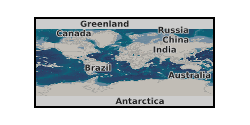
This dataset contains photographs from an optical microscope by transmitted light and reflected light. The data was collected in 2022-2023. The data was collected for the purpose of visualising spatial textures and microstructures in the collected samples. The data was collected by John MacDonald and Robin Hilderman (University of Glasgow) who retain the original data.
-
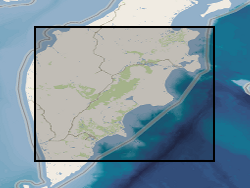
This dataset contains bulk rock, glass, melt inclusion and host phenocryst geochemical compositions for materials from Tolbachik volcanic field, Kamchatka, Russia, together with supporting petrographic information. Sampling localities are provided together with the bulk rock compositional data. Samples were acquired between 2016 and 2019 and the data were collected between 2016 and 2020 using secondary electron microscopy, electron microprobe analysis, secondary ion mass spectrometry, laser ablation ICP-MS, X-ray fluorescence and solution ICP-MS, and multi-collector ICP-MS methods. Most of the data are included in a manuscript (Iveson et al.) to be submitted to Journal of Petrology in March 2022.
-
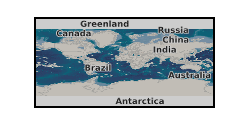
Results of piston cylinder experiments on lower-crustal material from the Ivrea Zone, Italian Alps. Natural sulfides and sulfide-silicate mixes from lower crustal cumulates were heated and pressurised to conditions matching those of the MASH zone, which is hypothesised to be the source of metals for post-collisional porphyry Cu deposits. This was done in order to simulate partial melting and examine the mobility of metals in this environment. This data contains experimental logs stating the experimental conditions; reflected light photographs of the experimental capsules; scanning electron microscope element maps and identification of platinum group minerals and precious metal minerals in the capsules; and trace element concentration of sulfides in the capsules. This data was collected as part of the TeaSe consortium NERC grant in order to test hypotheses about porphyry Cu deposit formation. This data was collected by researchers at Cardiff University and the University of Edinburgh.
-
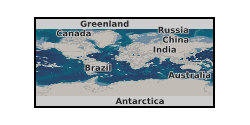
Data has been recorded during triaxial rock deformation experiments where Lanhelin granite samples were subjected to dynamic and half-controlled shear failure. The data consists of mechanical data (load, displacement, confining pressure, strain gauge data), ultrasonic data (AE source locations and arrival times, sensor locations, arrival times of active acoustic surveys), and scanning electron microscope images of the samples after shear failure. Dataset contains all data necessary to evaluate the results presented in the paper entitled: 'Off-fault damage characterisation during and after experimental quasi-static and dynamic rupture in crystal rock from laboratory P-wave tomography and microstructures' by Aben, Brantut, and Mitchell, Journal of Geophysical Research: Solid Earth.
-
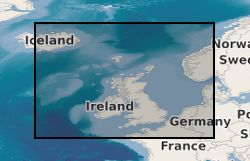
The British Geological Survey hold a collection of data recorded during marine geophysical surveys which includes digital data and analogue records. These data result from approximately 350,000 line kilometres of multi-instrument geophysical survey lines. The data include seismic, sonar, magnetic, gravity, echo sounder, multibeam bathymetry and navigation data. The seismic data are mainly for airgun, sparker, boomer and pinger. The data were primarily collected by BGS and the collection also includes additional third party data. The data are primarily from the UKCS (United Kingdom Continental Shelf). The data are stored within the National Geoscience Data Centre (NGDC) and the Marine Environmental Data and Information Network (MEDIN) Data Archive Centre (DAC) for Geology and Geophysics. The majority of legacy geophysical paper records are available as scanned images viewable via the BGS Offshore GeoIndex www.bgs.ac.uk/GeoIndex/offshore.htm. Other records can be scanned on request. Older records are of variable quality. Data not yet available online including segy are available on request enquiries@bgs.ac.uk. The data are applicable to a wide range of uses including environmental, geotechnical, geophysical and geological studies. Reference: Fannin, NGT. (1989) Offshore Investigations 1966-87. British Geological Survey Technical Report WB/89/2, British Geological Survey.
-
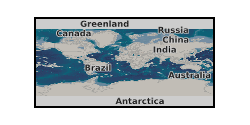
Analyses of archive rock and soil samples from the Mushgai Khudug (Mongolia), Dalucao, Miaoya and Lizhuang (China) rare earth element deposits. Data characterise mineralogy, bulk rock geochemistry and sequential leaching experiments on laterite, weathered rock and soil overlying carbonatite related REE deposits. The data was collected to determine enrichment and depletion of the REE relative to bedrock, the mineral host of REE and the ease of extraction.
-
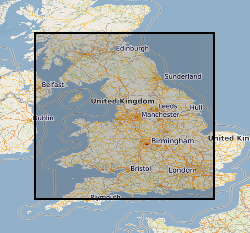
This dataset comprises data from Wessex Archaeology surveys which were conducted over various wreck sites between 2003 and 2010. Three of these datasets were acquired in English waters, one in Welsh waters and one in Scottish waters. The geology and geophysics component of the data are archived by British Geological Survey (BGS) in the Marine Environmental data and Information Network (MEDIN) Data Archive Centre (DAC) for Geology and Geophysics. The data include multibeam echosounder, single-beam echosounder, sidescan sonar, sub-bottom profiler, magnetometer, and geological data (vibrocore logs and photos). Data were also provided to other archive centres as appropriate - UKHO (bathymetry), Royal Commission Ancient and Historic Monuments Wales (geophysics), Royal Commission on the Ancient and Historical Monuments of Scotland (geophysics and diving/ROV), Archaeology Data Service (diving/ROV). Although generated for archaeological purposes, these high quality and resolution data are capable of re-use by marine surveyors and scientists from a range of different fields. Data are delivered via the BGS Offshore GeoIndex www.bgs.ac.uk/GeoIndex/offshore.htm and additional data are available on request enquiries@bgs.ac.uk.
 BGS Data Catalogue
BGS Data Catalogue